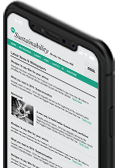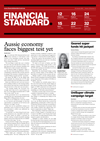Preparing for mandatory climate reporting: EnergeticsBY RACHEL ALEMBAKIS | THURSDAY, 14 DEC 2023 4:23PM Editorial note: This is the sixth in a six-part series of articles brought to you by Energetics In 2024, Australian business will need to focus on the strength of their response to climate change, with government aiming to legislate mandatory climate disclosures for Australian companies based on the International Sustainability Standards Board (ISSB)'s global reporting framework. Business should not underestimate the task ahead. The Australian Accounting Standards Board (ASSB) has released an exposure draft of the Australian Sustainability Reporting Standards (ASRS). A public comment period is open until 1 March 2024 for ASRS 1 General Requirements for Disclosure of Climate-related Financial Information and ASRS 2 Climate-Related Financial Disclosures, The two new standards would kick in from 1 July 2024 and apply first to companies that fit two of three criteria - more than 500 employees, more than $1 billion in assets and more than $500 million in revenue. ASRS 1 and 2 are based on ISSB, but AASB has focused more narrowly on climate-related disclosure in line with government efforts to make climate disclosure mandatory under new legislation. It is expected that Treasury will consult on exposure draft legislation to give effect to the climate-related financial disclosure regime later this year, with legislation introduced in early 2024. This leaves a narrow window for passage ahead of government's commitment to kick off the climate reporting regime from 1 July 2024. Q&A with Mary Stewart, CEO, Energetics Q: What are the main challenges coming with ASRS? A: While we welcome the ASRS as it delivers certainty to companies on what they need to report, there are some challenges with the proposed content. There are areas where ASRS requirements might deviate from those of IFRS S2. It's challenging from two perspectives - that of the finance sector, and that of the reporters. With respect to the finance sector, if Australian companies are reporting differently to comparable assets in other global jurisdictions, there will be a problem, remembering that the aim of the ISSB standards is to deliver datasets to support decision taking by investors. If Australian companies are not reporting in alignment with other countries this could add an unnecessary barrier to investment. The second is the perspective of the reporters themselves, and particularly reporters with assets in more than one global jurisdiction. If Australia is out of step, it will be very difficult to build a single reporting data set that will satisfy all reporting requirements. Our clients are telling us they can't work out how they would build the data sets or how an Australian data set can sit on the same page as a New Zealand data set, for example, or a European data set. Until we have a final version of the ASRS, as noted, the document is out for comment until 1 March 2024, we're not going to be sure how far apart the two are. Between now and then, businesses need to respond to AASB's public consultation and call for a clear alignment with global standards. As it stands right now, no other jurisdiction has significant carve out from ISSB. Australia would be going it alone. Q: Assuming that mandatory climate reporting legislation is passed, what should businesses be doing now to prepare? A: Gather data on Scope 1 and Scope 2 emissions, which they should be gathering anyway. Understand all energy sources and any other sources of emissions. You have to have a robust inventory for everything that is under your control. This is basic risk management. Articulation of Scope 3 emissions is going to be challenging, but as a minimum, businesses need to have a plan for finding that information and understanding where risks lie. When it comes to transition plans and physical risk, opaque or so called "black box" approaches to physical risk are not adequate. If you don't have time to look at your physical risk in more detail, have a plan on how you're going to do this. The TCFD requirement on physical risk is a minimum requirement. Going forward you will need more detail. When it comes to transition risk, it's important to understand that a transition plan is not a net zero plan. How are you going to take what you do now to 2050? What will survive of your business model in a zero-carbon economy that has changed immensely? And of course, build the governance structures that will help with delivering the outcomes that are committed to. Q: What gives you hope? A: The opportunity. There is huge first mover advantage in this. This is about a managed transition. It is not going to be easy, but we don't want a catastrophic transition. It's challenging for businesses because we're asking them to be on top of everything and be willing to make mistakes. I'm hoping that if we have standardized reporting and financial institutions are comfortable that investment is being derisked through the processes in place, we will see private sector money going in the right direction. Australia has the most extraordinary land area. We must decide how best to use this space. Do we want to export sunshine as hydrogen? Do we want to refine metals either with the hydrogen we produce, or with renewable energy? There is enormous opportunity. We just need some brave decision makers. Related News |

Today, senior journalist and host Rose Mary Petrass sits down with Sharon Davis, Executive Director of Investments at Future Super, a superfund that invests for a fossil fuel free future.
With effective risk management and capital allocation, Australia's carbon market can scale to become the biggest in the world, Westpac and the Carbon Market Institute (CMI) say.
Board directors of energy companies continue to be elected with over 95% shareholder support, even when those companies perform poorly against investor expectations.
The RIAA Conference Australia 2024 is coming up in May, helping investors navigate the mainstreaming of sustainability, and unveiling pivotal initiatives like the Sustainability Classifications and the Artificial Intelligence and Human Rights Investor Toolkit.















